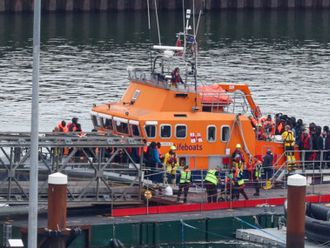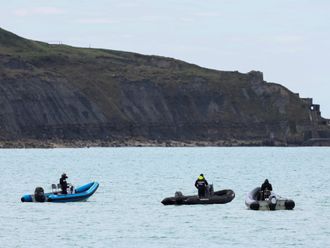When the Provisional IRA declared a cessation of military operations on August 31, 1994, the republican faithful celebrated the announcement as if it was a strategic victory. Processions of IRA and Sinn Fein supporters drove through west Belfast and the west bank of Derry in cars and vans, waving Irish tricolours, giving clenched fist salutes and V-for-victory signs. Many in the republican base had been told the ceasefire would deliver a British declaration of withdrawal or even a united Ireland within a short time.
Twenty years on, Northern Ireland is still part of the United Kingdom and Sinn Fein shares power in a devolved government with unionists whose departments rely completely on the economic link to the British Treasury. In Derry, where the Troubles first erupted in 1969, two people from either side of the river Foyle give their perspectives on how much has changed since that historic day.
Pauline Mellon, then 19, was too busy curling her hair to notice the klaxons and the cheering from IRA and Sinn Fein supporters outside on the afternoon of August 31, 1994.
Although her life had been marked by the Troubles raging on her doorstep on the sprawling Galliagh housing estate, she was more concerned about looking good for her night out with her future husband.
Hope for change
“It was only when my mother came upstairs and told me that the IRA had called a ceasefire that I realised what had happened,” she said. “And then I remember thinking ‘well, brilliant but that was long overdue … by about two decades.’ Later that day what I hoped for was a chance for change, a chance for our communities to get better.”
Mellon recalled that she was “more relieved than in any way euphoric” that the Provisionals’ armed campaign had come to a historic stop.
Unlike many of her neighbours on an estate that produced many republican figures — including the Irish National Liberation Army prisoner Mickey Devine who died in the 1981 hunger strike — Mellon did not expect the ceasefire to deliver a united Ireland.
Two decades later Mellon, the founder of a blog called the ‘Diary of a Derry Mother’, can see from her front window the mural commemorating Devine. Beyond that, she said, she sees nothing but deprivation and lack of hope in her community.
The mother of three boys, all under the age of 15, said she feared for their future in terms of jobs and prospects. “I don’t see a future for my children in Derry because when I look around me the majority of celebrations or parties taking place involve seeing off young people, wishing them well as they are about to emigrate.”
“In this city, in places like Galliagh, everybody is more equal but some are more equal than others.”
Regular IRA target
The one major thing Nigel Gardiner is relieved about 20 after the IRA ceasefire is that he no longer has to check under his car for booby trap bombs or fear that he will be killed outside his front door. As a former member of the locally recruited Ulster Defence Regiment he was a regular IRA target and on several occasions was warned there were plots to kill him.
Sitting in a cramped office upstairs in Bonds Street, Derry (as an Ulster loyalist he calls the city Londonderry), Gardiner also remembers seeing the victory celebrations in IRA strongholds on August 31, 1994.
“Initially I thought it was just another propaganda ploy. I had lived through previous IRA ceasefires that never lasted and so was sceptical that this one would hold.”
However, the 1994 cessation, endured eventually and led to the IRA disarming most of its weapons.
“I know a lot of unionists and loyalists thought differently back in August 1994, but to be honest I never actually believed the union was under threat and that there was no secret deal between the IRA and government.”
But for Gardiner, who is now a community activist helping former loyalist paramilitary prisoners reintegrate into society, working class Protestants have lost out on two fronts: the economy and the so-called culture wars.
“The IRA and Sinn Fein opened up a new front by targeting Orange and loyalist culture. By seeking to ban and re-route loyalist parades and denigrate our culture. The move to restrict flying the union flag at Belfast city hall is just the latest in a long strategy to hollow out Britishness in the province.
Attitude to the police
“One thing that has gone full circle is the Protestant, Unionist, loyalist community’s attitude to the police. The PSNI (Police Service of Northern Ireland) now only uses heavy-handed tactics to deal with loyalist protests whether they be about the flag issue in Belfast or a banned Orange Order parade. The police don’t dare do that with republicans, even dissident republicans, the latter who are even allowed to march through Belfast city centre glorifying their ongoing violence unchallenged.
“As for any so-called peace dividend, in the areas like this where the battles were fought, I don’t see any evidence of it. The republican community has done better in terms of getting infrastructure into their areas.” Asked if he believed people in Bonds Street were less well off economically or socially than in Galliagh, he admitted: “Well no, not all. The overall deprivation levels in the old war zones are there across the board. But the standard of housing say in Protestant working class areas in Northern Ireland is second class compared to nationalist areas.”
Looking outside into a small loyalist enclave clinging to the east bank of the river Foyle, with its Coronation Street style terrace housing and union flags flying from lamp-posts and houses, Gardiner accepted that poverty rates in republican areas on the west side were as bad if not worse than in loyalist districts.












